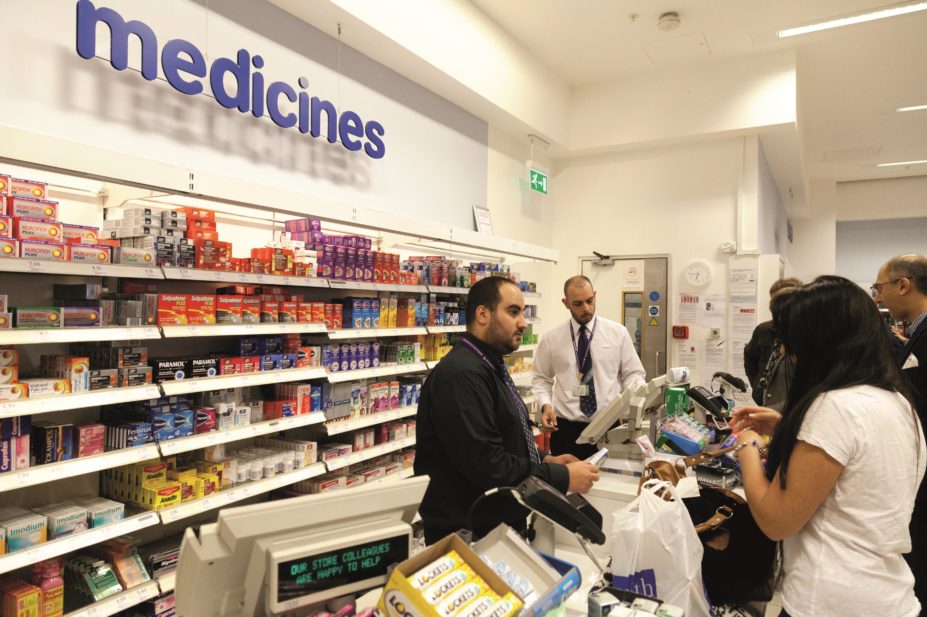
Kumar Sriskandan / Alamy Stock Photo
The number of prescriptions dispensed in England by community pharmacies increased by 1.7% in 2015–2016, while the number of pharmacies stayed relatively steady, figures from NHS Digital show.
The figures were released just two weeks before the 12% cut to the community pharmacy budget is due to be implemented on 1 December 2016 for the final four months of this financial year. They show that 995.3 million prescriptions were dispensed in England in 2015–2016, around 17 million more (or a 1.7%) increase on the 978.3 million dispensed in 2014–2015.
Over the same one-year period, the number of community pharmacies in England increased by 14 (0.1%), from 11,674 to 11,688. This is equivalent to an increase of roughly one pharmacy for every 1.2 million extra prescriptions dispensed. The number of community pharmacies has risen by 15.3% since 2006–2007, when there were 10,133 pharmacies. But this increase has slowed sharply over the past couple of years. The figures show that 2015–2016’s is the smallest rise in community pharmacy numbers in a decade and follows a rise of 27 between 2012–2013 and 2013–2014. In previous years, pharmacy numbers were increasing by in excess of 150 every year.
The number of prescription items dispensed increased from 688.4 million in 2006–2007 to 995.3 million in 2015–2016 — a 44.6% rise
Elizabeth Wade, policy director at Pharmacy Voice, says: “One of the things that has been frustrating is the messaging from the government about how there has been an increase in the number of pharmacies over the past decade, but without making the point that there has been a massive increase in the volume of prescriptions that are being dealt with. You would expect an increase in capacity to deal with that.”
Wade says it is too early to tell what the likely impact of the cuts to pharmacy funding will be on pharmacy numbers: “I don’t think at the moment there is a clear picture of what the impact is going to be.”
The figures from NHS Digital show that almost all pharmacies and appliance contractors are prepared to receive electronic prescriptions (99.8% in 2015–2016 compared with 90.7% in 2014–2015), and the number of electronic prescriptions dispensed by pharmacists has more than doubled, from 145.4 million (14.7%) to 355 million (35.4%).
The provision of services designed to help patients get the most from their medicines and which form part of the community pharmacy contractual framework in England have also increased. In 2015–2016, 3.3 million medicines use reviews (MURs) were conducted, an average of 300 per pharmacy, and 821,893 new medicine services were provided, an average of 87 per pharmacy. A total of 94.4% of pharmacies carried out MURs and 80.8% conducted new medicine services.
From September 2015, pharmacies have also been able to administer the flu vaccine to certain eligible patients under the contractual framework; during the 2015–2016 flu season, 7,195 pharmacies (61.6%) offered the vaccine, with 595,467 vaccines administered in total.


